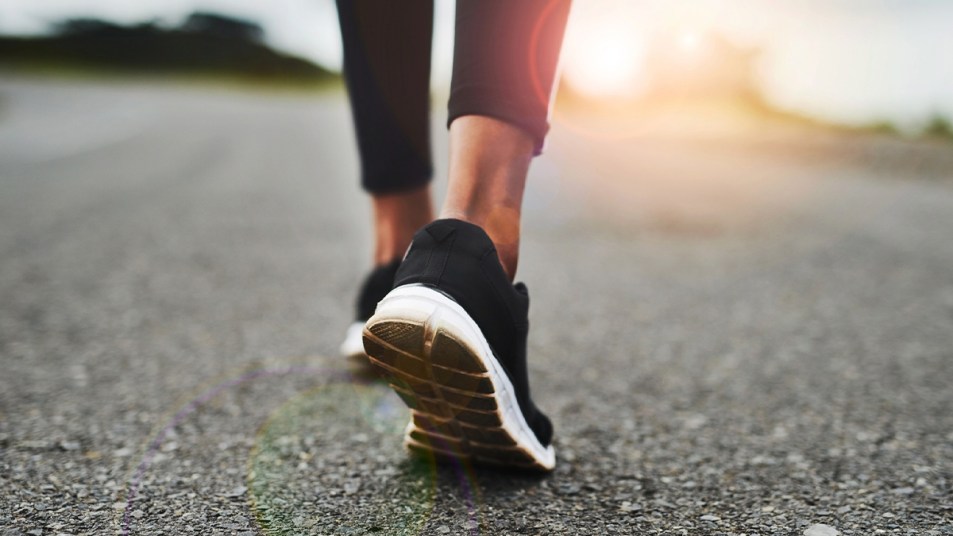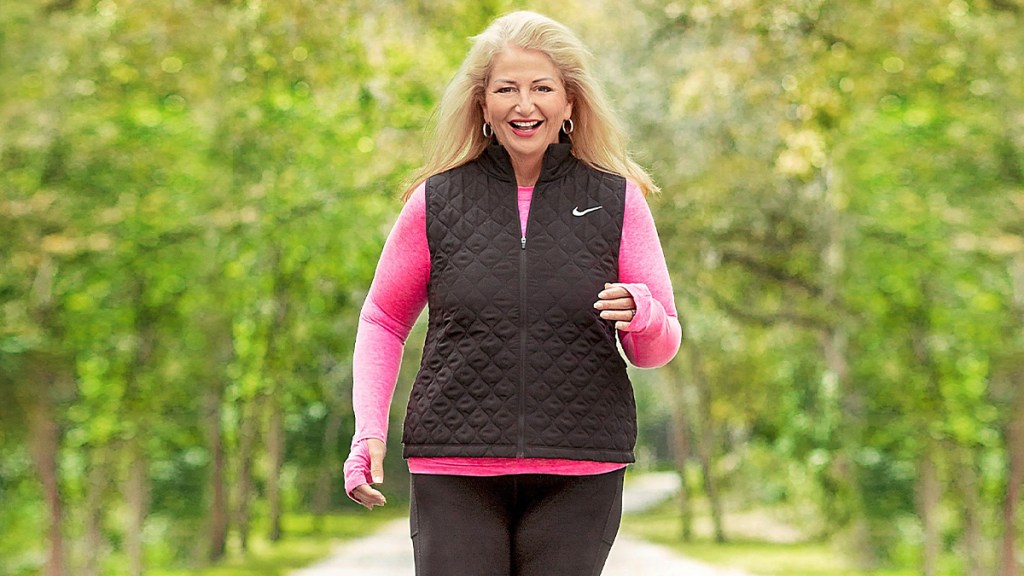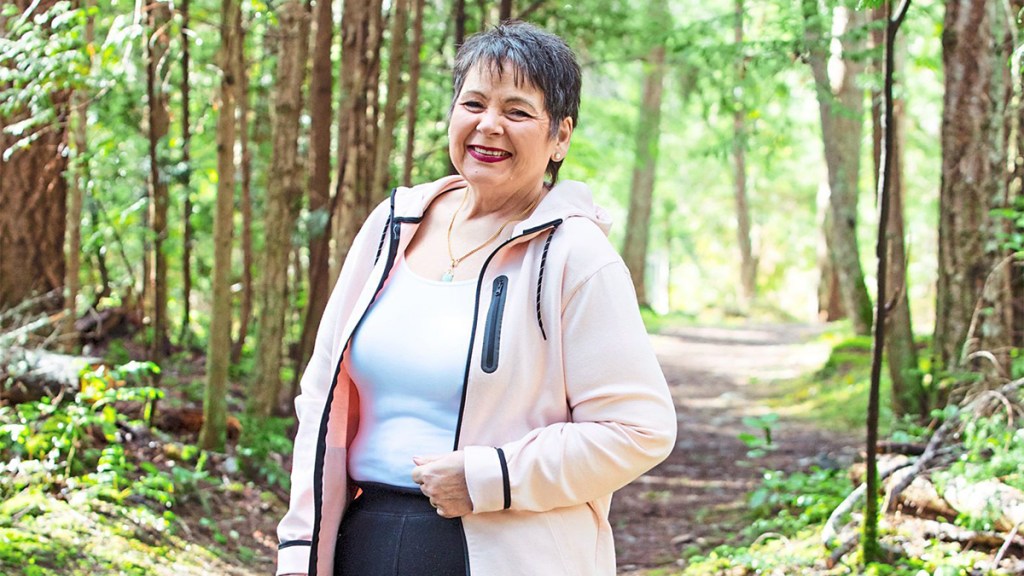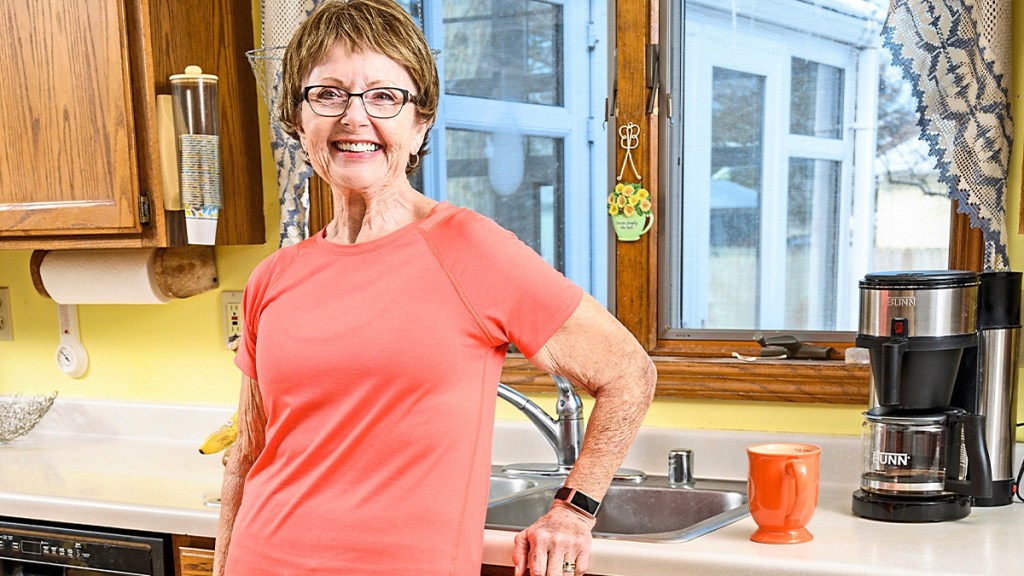3 Ways to Walk Off Stubborn Fat and Shed Extra Pounds at Any Age

Since the start of the Covid-19 pandemic, walking has become more popular than ever. Researchers from the University of Vermont say that 70 percent of people report spending more time strolling outdoors in the last year and that women are nearly three times more likely to hit the streets than men.
After never considering that walking could be the answer to their health and weight loss woes, these three women discovered the walking strategy that works best for their individual lifestyle — and each transformed her life for the better. Read on for the science-backed advice that will help you do the same!
If You Need Fast Results in Your 50s
After undergoing an MRI, Lisa Asbell nervously waited for the doctor to explain the damage that was found in her throbbing knee. I just know there’s something horribly wrong, she thought to herself. I’ve been in so much pain. I probably need surgery right away… But that’s when the doctor delivered some shocking news, “There’s nothing wrong with your knee. You’re just too fat.”
A nurse who had weighed 300 pounds for 30 years, Lisa always convinced herself that her weight wasn’t a problem because her lab work was “normal.” But suddenly she could no longer ignore the evidence that all those extra pounds were harming her body — she was spending hundreds of dollars a month on over-the-counter pain medications. With that wake-up call, she knew: I have to get this weight off fast to prevent any more damage!
Lisa decided to start walking, just a few blocks at first. She walked each morning before her hectic workday got underway. She admits, “I’d learned from years of yo-yo dieting and yo-yo exercising, if I put it off, I got lost in my busy day. So I always walked in the morning, before breakfast.” It turns out, this was the best thing Lisa could have done.
Within just a few weeks, Lisa was down 15 pounds and couldn’t believe how much her pain improved. “It almost resolved itself.” And over the course of the next 10 months, Lisa unpacked 126 pounds and 15 inches from her waistline. Best of all, she no longer regularly takes pain medications. “I went from feeling 80 just nine months ago to feeling like a teenager,” cheers Lisa, who shares her weight-loss journey online and has turned her website into a private community of women who have lost thousands of “collective pounds” together (LisaAsbell.com).
Now Lisa walks three to six miles a day. She beams, “This health transformation has been the best thing I could have done for myself. You can be, do or have anything you want! You have to believe!”

How Fasted Walking Speeds Slimming
Walking on an empty stomach (a strategy sometimes called “fasted exercise”) triggers the body to burn fat for fuel for speedy weight loss. “When you fast for 16 to 18 hours, you shift from burning carbohydrates to burning fat. Exercise like walking enhances this effect,” explains functional medicine expert Sara Gottfried, MD, author of Brain Body Diet (Buy on Amazon, $17.44). Indeed, in a study in The Journal of Clinical Endocrinology and Metabolism, people who exercised on an empty stomach burned twice as much fat as those who ate before exercising. Dr. Gottfried adds that other benefits of fasting, including reduced inflammation, improved digestion and nutrient absorption, and spurring growth of new, more youthful cells, can also help speed weight loss for women over 50.
Your plan for success: To follow Lisa’s lead, try hitting the street before you hit the kitchen. “Some people see a benefit after 14 hours of fasting, others need 16 to 18 to start burning fat for fuel,” explains Dr. Gottfried. For example, if you finish dinner at 7 pm, try walking in the morning and then not having breakfast until 11 a.m. And if you want to sip black coffee before your walk, feel free: Canadian researchers found that it can boost fat burning during exercise by 30 percent and curb post-exercise muscle soreness by 48 percent —and as long as you skip milk and sugar, it won’t impeded your results. Once you start walking, go at a moderate pace — you should be breathing a little harder, without gasping. If you’re walking with a friend, you should be able to ask and answer short questions—but not tell a long story. Pump your arms to get the blood flowing and your heart rate up.
If You Need More Motivation in Your 60s
Arriving home from work, Dee Takacs-Chan looked at her sneakers, but chose the couch instead. Like a million times before, the dedication to her latest get-fit goal had already weakened. She admitted to herself, After working 50 to 60 hours a week, I’m so tired, exercise isn’t even on the list.
For years, Dee’s weight trended up and down, up and down, limiting her ability to move and participate in life. She blamed boredom. “I’d join the gym and then the novelty would wear off. I could never be one of those people who worked out every day.” Then when a collection of health problems like high blood pressure began to pile up, Dee realized, “If I didn’t find a way to stick to a plan, I was going to be 400 pounds again.”
But this time, Dee had a secret weapon: To help her on her mission, she joined a TOPS support group and started walking with 10 to 12 other women from the group twice a week. At first, it was just a third of a mile at a time. But soon Dee was able to walk twice and even three times as far. The social support was key. “I felt accountable to somebody. There was no judgement with this group. We supported each other,” she says. The women in Dee’s walking group became so close, they broke into smaller groups so they could effectively socially distance and keep taking their walks together throughout the pandemic. Dee says, “If you had told me a year ago I’d be excited to go hiking on mucky trails I would never have believed it.”

How Social Support Speeds Slimming
“People have to find exercise fun. If you have someone to talk to it’s a much more entertaining experience,” says Joseph Tieri, DO, an exercise and longevity expert and the author of Reverse Sarcopenia (Buy on Amazon, $15.95). “Studies have shown that people walk a lot more and more consistently when they have that kind of support system.” Walking with friends has also been especially important since the start of the pandemic for brightening mood and maintaining motivation. “A lot of my older patients meet and walk together,” shares Dr. Tieri. “You can wear masks, do some distancing and still have company.”
Then there are the speedy results. In a study from the Harvard School of Public Health, participants who were assigned to a group-based weight loss program lost 48 percent more weight than those who participated in the same program solo. The social support also makes it easier to keep the weight off: In a University of Minnesota study, two-thirds of dieters who enrolled in the program with a friend sustained their weight loss after six months, compared to only a quarter of those who joined alone.
Dee’s results speak for themselves: Within three to four months of consistent walking, she was able to get off her blood pressure medication. Overall, Dee achieved her goal and shed 102 pounds in less than a year! Her energy soared so much she bought herself a bike, her first one since the age of 12! Now she and her husband enjoy riding along the ocean. “I pretty much feel like I’m 20 again. I’m doing all the things I wished I had been doing all along!”
Your plan for success: To get the benefits, enlist some friends to walk with you or start a walking club. Set a regular day, time and place (as well as a backup indoor location for rainy days) and make sure everyone in the group knows how to get in touch with the others if plans change or if they can’t make it. Once you start walking, go at a slow pace (you should be able to breathe easily and comfortably have a conversation) for at least 15 minutes, working up to longer walks as you’re able.
If Pain Keeps You From Walking in Your 70s and Beyond
Susie leaned against the counter, hoping to take a bit of pressure off her aching hips and knees. But it was no use. At 325 pounds, she could hardly stand on her feet for 8 hours a day as a clerk at the US Postal Service. After handling the last package of her shift from a customer, she had to accept a hard truth about herself: I’m going to have to retire. My body can’t take this anymore.
To save money after retirement, Susie moved in with her sister Becky, who also struggled with extra weight and joint pain. That’s when the sisters decided to team up to get healthy together, with the help of the SparkPeople.com food tracking and motivational app. They cleaned up their diet, but one month into their experiment, exercise remained a mystery. Susie admits, “I refused to try exercise because I felt like I couldn’t do it.”
Truth be told, while wearing a size 36W, Susie could barely walk 30 feet without having to sit down and catch her breath. Still, walking seemed like the easiest place to start so the pair tried to take a few more steps with each new day. As pain persisted, Becky got the idea to buy Nordic-style walking poles, which they quickly discovered helped relieve pressure from their joints, steady their balance and improve their posture — factors that allowed them to walk pain-free. Susie says, “Without the sticks I don’t know if we would have continued walking.” In fact, after using them, she says, “I never had any issues with my hips hurting again.”

How Poles Speed Slimming
“Knee and hip pain probably account for more than half of the reasons older women will list for not being able to do the type of exercise they would like to,” says Dr. Tieri. But using walking sticks can help counteract pain, stability and balance issues and improve confidence, says Dr. Tieri. In fact, this newfound comfort and confidence made women in one study 130 percent more likely to stick with a walking program that included poles than one that didn’t.
With the pain gone, the sisters’ strolls grew to a couple miles a day. Susie says, “It just got easier and easier and I thought, ‘Oh man, I could just walk away these pounds.’” And she did! Susie watched her weight fall like an elevator. She shed 186 pounds and Becky dropped 187 pounds — all with the help of those simple walking poles.
Now the retiree says, “I’m in better shape today than I was when I was in my 30s.” Plus, she’s so glad she achieved this success side-by-side with her sister. “If Becky hadn’t joined me on this journey, I don’t know where I would be.”
Your plan for success: To provide stability and relieve pain during your walks, shop for an adjustable model walking pole that extends to at least 45 inches like York Nordic Hiking & Walking Poles (Buy on Amazon, $59.99). To set the proper length, hold the pole three inches in front of you with the bottom resting on the floor. When the pole is the proper length, your elbow will form a 90-degree or slightly greater angle. If you’re walking uphill, you can subtract two inches from the optimal length to aid stability. If you’re walking downhill, add two inches. If you experience hip or knee pain while walking, Dr. Tieri also recommends avoiding walking on pavement as much as possible in favor of softer surfaces like a track or grass. “A neoprene knee brace is also a good way to reduce pressure on the joint,” he adds. “You can buy one at any pharmacy (Buy at Walgreens, $8.99) and slip it on like a sock.”
For more brilliant ways to boost your walking program:
Women Over 50 Are Losing 100+ lbs Without Dieting Just By Walking Like *This*
6 Treadmill Moves That Boost Balance, Knee Strength and Bone Density
This article originally appeared in our print magazine.
















